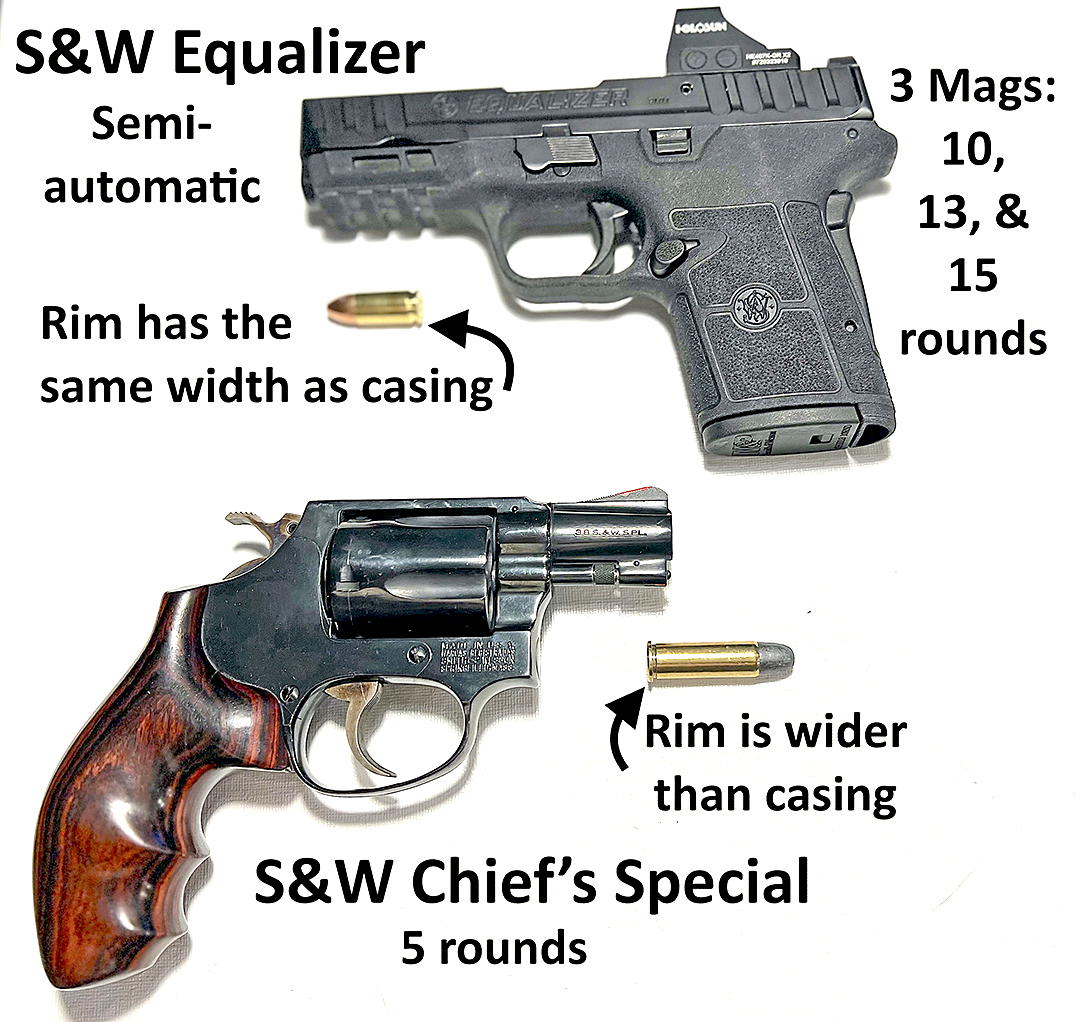Newbie’s dilemma

By MARJ LAW

She isn’t happy.
“Marj, I went to buy a gun. I told the man I was a newbie at shooting. ‘Great,’ he says. ‘Are you interested in a rimfire or a centerfire handgun?’
“What’s with this rim and centerfire stuff? I just want an easy gun to shoot for protection. Maybe something to make holes in targets if I join you at the Wakulla County Sheriff’s Office range.
“So, when I couldn’t think of an answer right away, he asks if I want a .22, 9mm, .380 or a .38. Well, how the heck do I know? What are all those numbers?”
Then he asks if I want a semiautomatic or a revolver. Come on! A gun! A gun! Isn’t that easy enough? What’s with all the questions? He had some nerve to ask all those questions. He could tell I didn’t have a clue. Makes me feel stupid. I’m not stupid. I just don’t know from guns.”
Yep. She’s frustrated.
Don’t get me wrong. Sally’s a great person. But right now, she’s got a serious set of grooves in the middle of her forehead, her arms are crossed against her chest, and her right foot is tapping on the floor.
“You’re right, Sally. Just about everyone is confused when they start out. I sure was, too.”
“Really?” She looks skeptical. “Is it necessary to know all that stuff?”
“Sure, Sally. Let’s start with rimfire and centerfire. Look at these two rounds. What’s different about them?”
“One is bigger. One has a dot thing in the middle of its back.”
“Good observation! The one with the dot is called a centerfire round. The one without the dot is a rimfire round. A round has a casing, a primer, powder and a bullet.”
“I thought those were bullets.”
“We call them rounds or cartridges. The bullet is the nose or projectile at the end of the casing. These two casings have brass shells. This is how it works.
“A part of the gun called the firing pin or striker whacks the back of the casing. The primer is at the back. When hit, the primer sets off a spark that ignites powder inside the casing. This in turn makes an explosion which causes enough pressure to shove the bullet out of your gun to the target.”
“I get it,” she says. “Striker or firing pin whacks primer, igniting powder, setting off bullet. So why does one round have a flat back and the other has a dot in the middle of the back?”
“That’s where rimfire and centerfire come in. If there’s a dot in the center of the back, that’s the location where the striker hits the primer and it’s called a centerfire round. If there’s no dot, the firing pin hits the rim of the casing instead of the middle and that’s how it sets off the primer on a rimfire gun.”
“OK, so do all guns shoot either rimfire or centerfire?”
“Basically, .22s are the guns you’ll shoot that are rimfire. The .380, 9mm and .38 are centerfire.”
“My friend Jane has a .22. She says it is really easy to shoot. But Dad wants me to have a .38. Does it matter which I choose?”
“We’ll have to go to the range. That will help you decide what works best for you.”
“Daddy says a .380 is too wimpy.”
“Let’s look at each of the rounds for these guns. Do you notice that this .380 and the 9mm rounds are almost exactly the same diameter?”
“Yes, I see that. But the length of the brass casing is longer for the 9mm.”
“It is. There is more powder in the 9mm, so it can push out the projectile (which is the bullet) faster. Also, because it has more powder, it can push out a heavier bullet. More bullet speed and weight can be more effective to neutralize a threat. If you can handle the gun, that is.”
“Does this mean the 9mm will have more recoil than the .380?”
“Yes. In most cases.”
“Oh. Well, how about that .38 my Dad wants me to get? Is that more powerful than the 9?”
“No. The .38 is almost always a round you put in a revolver. Here’s a revolver. It has a cylinder that rotates when you shoot. This Chief’s Special holds five rounds: one for each chamber. Do you notice anything different about the .38 round versus the 9mm round?”
“They look about the same in diameter, but the .38s casing is longer. Also, the 38’s rim is wider than the diameter of its casing.”
“The .38’s rim is made for a revolver. A 9mm round won’t work in a .38 revolver because it does not have that wide rim.”
“OK. So, it looks like the .380, the 9mm and the .38 all have about the same diameter. Don’t they all have the same power?”
“No. There’s a difference in the casing’s powder. There’s also a difference in the bullet weight.”
“Since the .380’s round is smaller, I bet a .380 gun has less kick. The casing of the .38 is quite a bit bigger than the 9mm, so that’s why Dad wants me to get the .38. The longer .38 round has more power, right?”
“You’d think so, but the 9mm round is more powerful. Although the .38 casing is longer, it generally has a slower and heavier bullet and a different type of powder.”
“Does that mean the 9mm handguns have more recoil?”
“Recoil depends on the gun, the ammunition and on the shooter. However, recoil on this Chief’s Special is a lot greater than on this 9mm Equalizer. The Chief’s Special is a revolver. The Equalizer is a semiautomatic. The Equalizer’s slide absorbs a lot of what would be recoil.
“You don’t get that with a revolver. There’s no slide to absorb kick. You’ll feel a lot more recoil in this .38 versus this 9mm.”
“I don’t want recoil.”
“Instead of putting five rounds into the Chief’s Special, you can fit 10 rounds in the Equalizer. It also comes with 13 and 15 round magazines.”
“Why is that important?”
“Depends. How good a shot are you?”
“I’ve never shot a day in my life.”
“Then, if you’re a new shooter, wouldn’t you prefer more rounds to defend yourself?”
“Well, yeah.”
“Most 9mm semiautomatics hold more rounds than revolvers. Some hold a lot more.”
“I might need all I can get. So, why does Dad want me to have the .38?”
“Maybe he wants you to have the most simple gun. With the .38, all you do is pop a round in each of the 5 chambers, point and shoot. With the semiautomatic, you have to load the magazine and put it in the gun. Then, for most 9mms, you pull back the slide to move the first round into the chamber. Shooting a 9mm is more involved than shooting a .38.”
“I’d rather have the extra rounds and less recoil if my life were at stake.”
“That’s why we’ll go to the range and try out different guns. In theory, you want the 9mm. When you shoot the .380, 9mm and the .38, you’ll probably enjoy the 9 more, since your Dad doesn’t like the .380 caliber guns.
“But who knows? The one that you like and shoot the best is the one you ought to buy.”
Marj Law is the former director of Keep Wakulla County Beautiful who has become an avid shooter in retirement.
